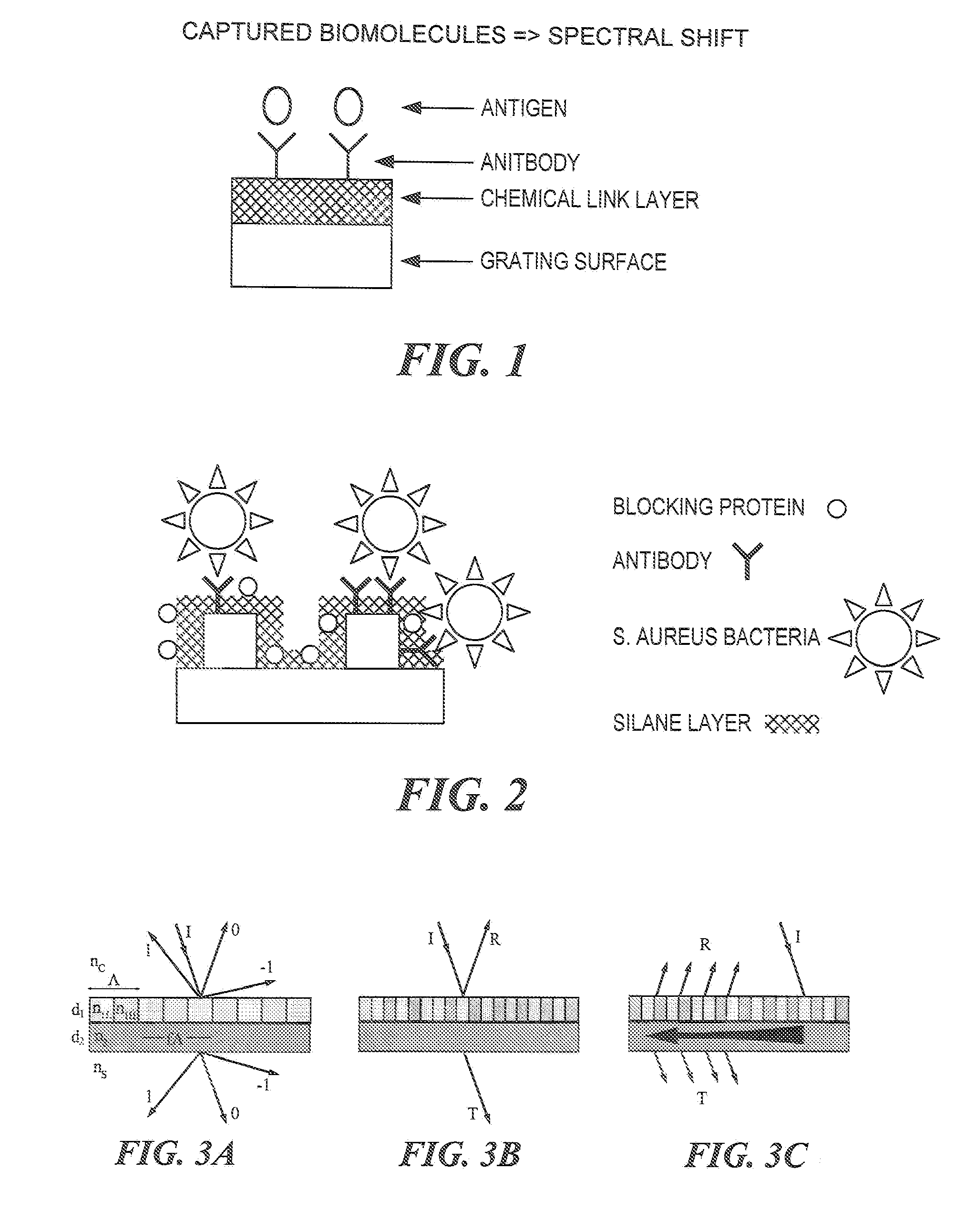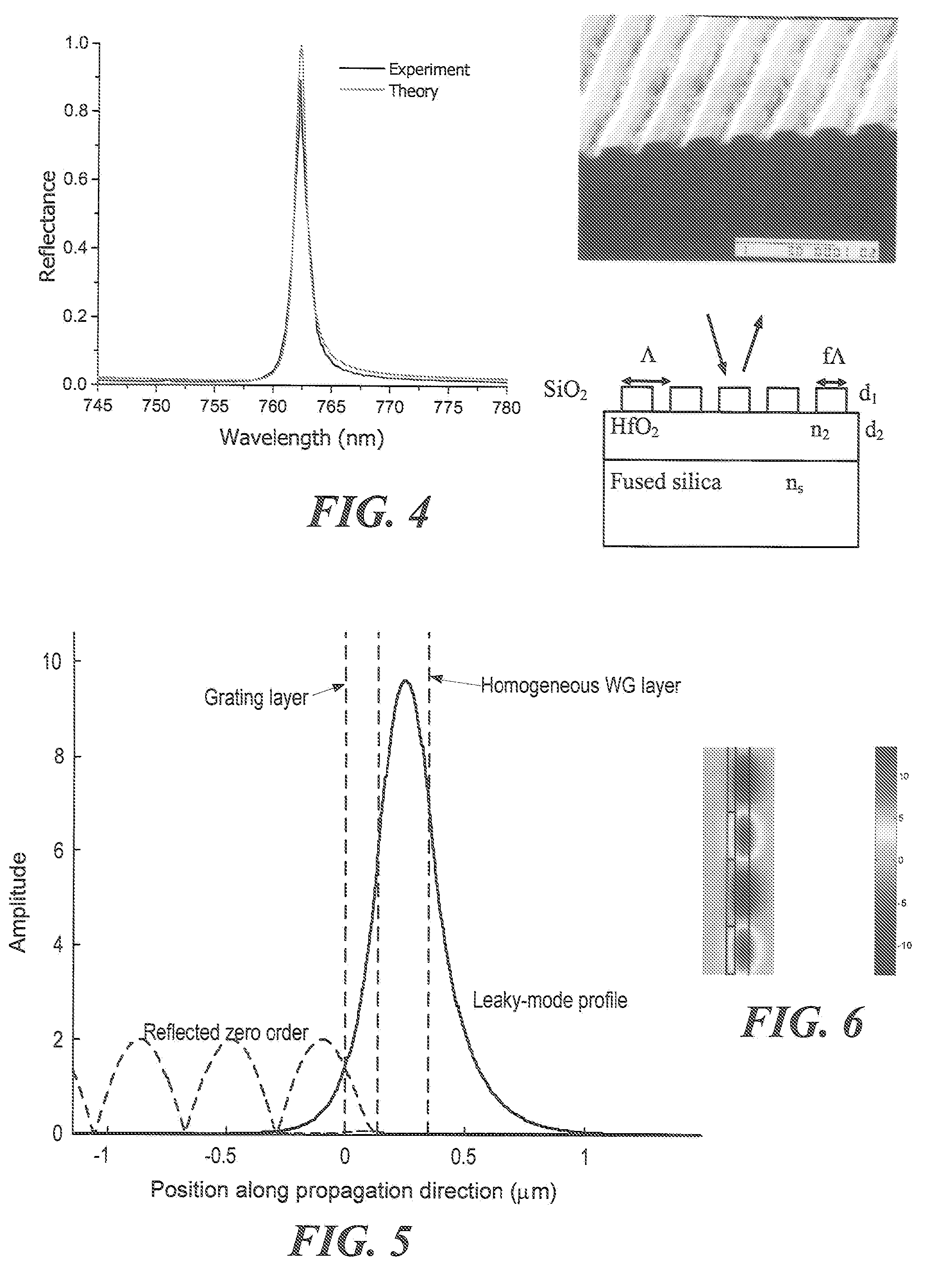Guided-mode resonance sensors employing angular, spectral, modal, and polarization diversity for high-precision sensing in compact formats
a technology of angular, spectral, modal, and polarization diversity, applied in the direction of optical radiation measurement, instruments, spectrometry/spectrophotometry/monochromators, etc., can solve the problem that the change in refractive index and thickness cannot be resolved in one measurement at the same time, and the spectral sensitivity is very high, so as to improve the quality of the sensing operation and enhance the measurement precision. , the effect of improving the quality
- Summary
- Abstract
- Description
- Claims
- Application Information
AI Technical Summary
Benefits of technology
Problems solved by technology
Method used
Image
Examples
Embodiment Construction
Background
[0048]It has been suggested by the inventors that by changing the refractive index and / or thickness of a resonant waveguide grating, its resonance frequency can be changed, or tuned. The present inventors have discovered that this idea has applications for biosensors as the buildup of the attaching biolayer can be monitored in real time, without use of chemical tags, by following the corresponding resonance wavelength shift with a spectrometer. Thus, the association rate between the analyte and its designated receptor can be quantified; in fact, the characteristics of the entire binding cycle, involving association, disassociation, and regeneration can be registered. Similarly, small variations in the refractive indices of the surrounding media, or in any of the waveguide-grating layers, can be measured. A new class of highly sensitive bio- and chemical sensors has thus been enabled. This sensor technology is broadly applicable to medical diagnostics, drug development, ind...
PUM
 Login to View More
Login to View More Abstract
Description
Claims
Application Information
 Login to View More
Login to View More - R&D
- Intellectual Property
- Life Sciences
- Materials
- Tech Scout
- Unparalleled Data Quality
- Higher Quality Content
- 60% Fewer Hallucinations
Browse by: Latest US Patents, China's latest patents, Technical Efficacy Thesaurus, Application Domain, Technology Topic, Popular Technical Reports.
© 2025 PatSnap. All rights reserved.Legal|Privacy policy|Modern Slavery Act Transparency Statement|Sitemap|About US| Contact US: help@patsnap.com



